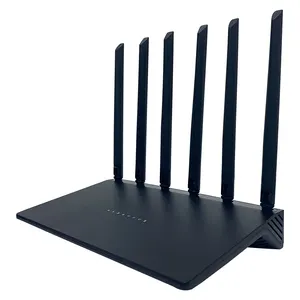
All categories
Featured selections
Trade Assurance
Buyer Central
Help Center
Get the app
Become a supplier

(7205 products available)





















































A WiFi beamer, also known as a wireless projector, is a type of projector that can receive and display images, videos, and presentations without a physical cable connection from a computer, phone, or tablet. It does this by projecting the media directly from the device over a wireless network connection (WiFi). Wifi beamers offer flexibility and convenience over traditional projectors.
WiFi projectors come in different types:
Mini beamers
Mini projectors, also called ""pico projectors,"" are small-sized projectors that are portable. They can easily be stored in a bag or pocket and are typically 5 inches (13 cm) wide or smaller. These projectors are light and can be powered by a battery or USB power supply, which enhances their portability. Mini projectors usually have a limited brightness, resolution, and projection range compared to larger models. Their primary purpose is to provide a quick, on-the-go projection solution.
LED beamers
LED projectors use light-emitting diodes (LEDs) as a light source. These projectors are more energy-efficient, which helps to extend the lifespan of the projector. LED projectors typically have a lower brightness level than traditional lamp projectors, making them best suited for viewing in darker environments. They are also compact and suitable for portable use. The colors produced by LED projectors are usually richer and more vibrant.
LCD beamers
LCD projectors make images using Liquid Crystal Display (LCD) technology. These projectors give a sharp image with accurate color. An LCD projector may be a better choice for those who want a brighter image, especially if the projected picture will be seen in daylight or other well-lit areas. LCD beamers are quite versatile and are usually used for business presentations, home theaters, or educational purposes.
Laser beamers
Laser beamers, known as ""laser projectors,"", use lasers to create the projected image. They have a high brightness level, which makes the pictures that they project very clear and easy to see, even in daylight or other well-lit areas. Laser projectors offer excellent color accuracy and contrast. Unlike traditional bulb projectors, laser beamers have a quicker startup and shutdown time. They are suitable for large venues.
WiFi beamers have a range of features that can vary depending on the model and brand. Nevertheless, they all have a common purpose — to project videos and images from a device onto a screen.
Streaming Capabilities
For projectors to function, they need a steady source of internet. Thus, a projector with a WiFi connection streaming images and videos is helpful. When embedded in a beamer, WiFi can allow users to stream content from online sources such as Netflix, YouTube, and Hulu, or to stream content directly from a device without a physical cable connection.
Wireless Connectivity
For laptop or mobile beamers, portability is a major factor to consider. Portable projectors, WiFi beamers, and mini projectors all fall under this category. Beamers, especially WiFi, require a power source to run. Pro beamer, power supply, and Android TV are all features that allow projectors to beam even when they are running on batteries. This makes them convenient because they can be transported anywhere.
Projector Screen Size
Every device has a size and resolution. Screens allow crisp and clear projection, while impromptu canvases, such as walls, do not. The size of a beamer screen depends on the model. iPhone beamers also have their own screen size. Nonetheless, screen size typically ranges from 20 inches to more than 300 inches.
Resolution
The lower resolution is 480 p, and the greater is 4 K. Projector resolution indicates how clear or sharp the resulting image is; higher resolutions produce sharper images. This is similar to WiFi beamers with higher-quality beams.
Brightness
Projector brightness refers to the intensity of the light beam. It determines how well the projector can render images in a bright or dark environment. A brighter projector can showcase images better in a well-lit room. It is measured in lumens and ranges from 200 to over 6000. Contrasting beamers with low and high projector brightness images can be showcased optimally in dark environments, such as home theatres.
Image Contrast Ratio
The image contrast ratio is the difference ratio between the darkest and lightest parts of an image. This enhances the viewing experience, especially for content with dark and light details.
APIs
Application Program Interfaces (APIs) allow beamters to be integrated with other systems. This makes integrating and collaborating with other applications easier, thus enhancing the user experience.
Operating System
WiFi beamers run on Android, iOS, a proprietary OS, or no OS. The operating system influences app compatibility, user interface, and overall projector functionality. Typical features are mobile, tablet, and laptop compatibility, among others.
A WiFi beamer can project images onto walls, so it may be used in any place where presentations or visuals are required. These items are also excellent for computer games or movies because they provide a larger viewing area. The following uses are more extensive:
Business and personal buyers can use various methods to choose a WiFi beamer that suits their needs. Here are some ways to select a WiFi beam that meets a purchaser's requirements.
Q1: What should one look for when buying a projector for Wi-Fi?
A1: When buying a projector for Wi-Fi, one needs to consider the projector's resolution, brightness, screen size, and purpose.
Q2: How long do projector lamps last?
A2: Lamp lifespan typically ranges from 2000 to over 10000 hours. In most cases, lamps can last over 2000 hours f successive usage before they are replaced.
Q3: Can someone use a Wi-Fi beam projector with a laptop?
A3: Yes. One can connect their laptop to the Wi-Fi beam projector either wirelessly or using a HDMI cable
Q4: Where is Wi-Fi beam projectors applications?
A4: Beam projectors are used for entertainment purposes like watching movies, gaming or TV. They are also used for educational purposes and business in conference rooms and meeting halls.